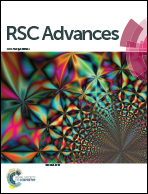Immunomodulatory pinguisane-type sesquiterpenes from the liverwort Porella cordaeana (Porellaceae): the “new old” furanopinguisanol and its oxidation product exert mutually different effects on rat splenocytes†
Abstract
Two new natural products, α-furanopinguisanol (1) and furanopinguisanone (2), were identified in the liverwort Porella cordaeana (Porellaceae). Although α-furanopinguisanol was previously reported in the literature, herein, we present arguments that its structure was actually erroneously assigned to a different, related compound. Structure elucidation was accomplished by spectral means (various 1D and 2D NMR experiments, IR, UV, MS) and the structures corroborated by chemical transformations. The relative configuration of the compounds was additionally verified by an analysis of shift changes produced by a lanthanide shift reagent. Immunomodulatory properties of these two compounds were also investigated. Their influence on rat splenocytes (SPCs) was monitored through MTT, trypan blue and neutral red assays, microscopic investigation of cells, comet assay, and protein, RNA and DNA contents. It was shown that, in higher concentration (10−4 M), compound 1 induced a blast-like transformation of SPCs, while in lower ones (10−8 to 10−6 M) it acted as a cytotoxic agent. On the other hand, compound 2 exerted prominent cytotoxicity in all concentrations. It the light of the obtained data, a possible mechanism of action of the two compounds was discussed.



 Please wait while we load your content...
Please wait while we load your content...